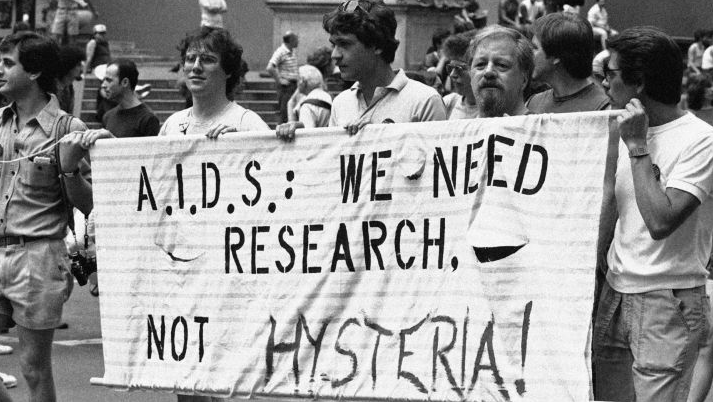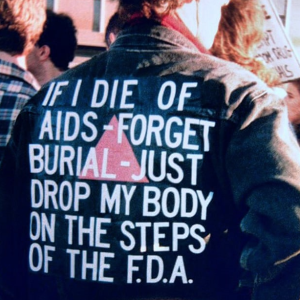On November 2nd, 2021, the American Food and Drug Administration (F.D.A.) announced that they were planning to commence human trials for a treatment, and potential cure, for HIV, which they have considered to be “groundbreaking”. The reason for this description, of course, is because, since the first case of HIV was reported in 1981, no real cure has ever been found; currently, the only known treatment for HIV is through the use of antiretroviral drugs, which stop the virus replicating in the body, allowing the immune system to repair itself and prevent further damage. Through the use of this drug, the virus becomes undetectable in the person’s body, and is therefore deemed untransmittable.
Given that this potential cure has taken 40 years to be found, this new research truly is “groundbreaking” — however, considering we are still in the midst of a pandemic, in which not just one, but six, vaccines have already been approved by the World Health Organisation, was that 39 years too long? And even though vaccines don’t equate a cure for coronavirus, the mere fact that the whole world was almost instantly working together to end the pandemic, proves that the leaders of our world have never shared the same concern for the community that is most effected by HIV/AIDS — that is, the LGBTQIA+ community.
While, in 2017, it was estimated that heterosexual people accounted for about 24% of HIV diagnoses, the majority of cases have existed, and continue to exist, in gay or bisexual men, many of whom (especially in the 1980s, when the virus was first discovered in humans) lived in fear of being found out for their sexuality. And their fears were amplified further, when they were marked as having a “gay disease”, creating an association between gay men and HIV/AIDS, in order to excuse harmful, painful stigmas and false narratives about them, allowing so many to believe that the gay community is disease-ridden and dirty. The spread of these ideas obviously lead to further damage, and prevented many people from being tested and finding out their statuses; even now, it is estimated that, in the U.S. alone, 13% of HIV-positive people don’t actually know they are living with the virus.
But how is it that so many still continue to suffer in silence, fearing of the judgement of others? There is no stigma surrounding those who contract COVID-19, and it is just as easy to go to a sexual health clinic and find out whether you have HIV, as it is to go to your local testing centre for a simple swab-up-the-nose coronavirus test.
The differences between the two pandemics are actually quite simple: as soon as government officials knew that they were just as susceptible to COVID-19 as the next person, they took action to protect everyone — whereas, with HIV/AIDS, talking about the subject was deemed as parallel to experiencing the subject, or having this “gay disease”, and nothing could be more harmful to a politician’s image than that.
In October of 1982, with 853 known AIDS deaths in the U.S. that year, journalist Lester Kinsolving asked President Ronald Reagan whether (with over 600 deaths and 1 in 3 people dying from AIDS) he would consider this an epidemic. The response that Reagan offered was shocking, and incredible disturbing. Looking at the issue as merely a source of light humour, Reagan only replied, “I don’t have it…are you…do you?”, and continued, “I don’t know a thing about it, Lester.”, before joining the rest of the press in an eruption of laughter.
Essentially, Reagan and the White House viewed the whole epidemic as a great joke, even though, in his 8 years in office, he presided over 89,343 known AIDS deaths.
Finally, in 1985, 3 years after Kinsolving brought the epidemic to the President’s attention, Reagan actually uttered the acronym “AIDS” for the first time, and addressed it as a “top priority”, in a press conference where he announced that Congress was to allocate $190 million, in order to fund research into treatments and cures of the disease. This lead to the development, both in the U.S. and U.K., as well as a few other countries around the world, of the first antiretroviral drug in 1987, and, eventually, 15 years after the first reported case, in 1996 researchers developed HAART (highly active antiretroviral therapy), which became the standard treatment for HIV.
15 years. Over 36 million deaths.
Little coverage. Little action. Little sympathy.
The first COVID vaccine took less than a whole year from the report of the first case to be approved.
But because the governments of the world were so concerned with removing themselves from any association to the “gay disease”, they forgot the care about their people.
In an ‘Act Up’ protest in October of 1988, American artist, photographer, writer, filmmaker, and activist, David Wojnarowicz wore a jacket summing up how so many in the LGBTQIA+ community felt about the issue of AIDS — it read: “if I die of AIDS — forget burial — just drop my body on the steps of the F.D.A.”
After all, if that actually happened, maybe action would have been taken earlier, and the F.D.A. would be announcing their potential cure for HIV much sooner. Because, for many of those in charge, unless the problem actually appears on their doorsteps, they have little motivation to clear it up.
By Sarah Clif, student





